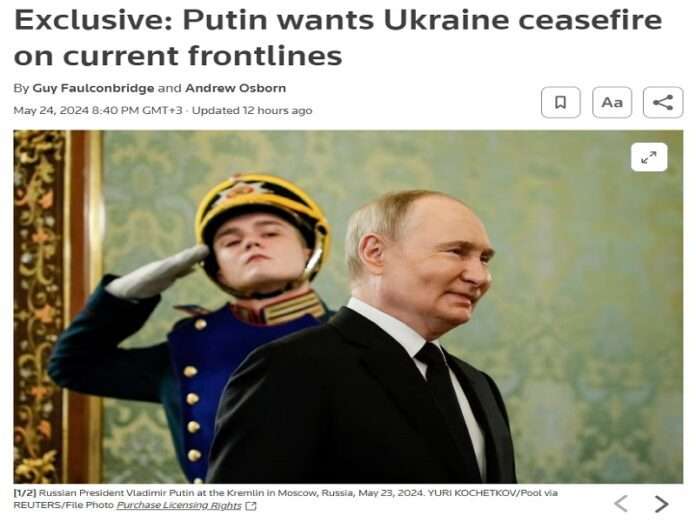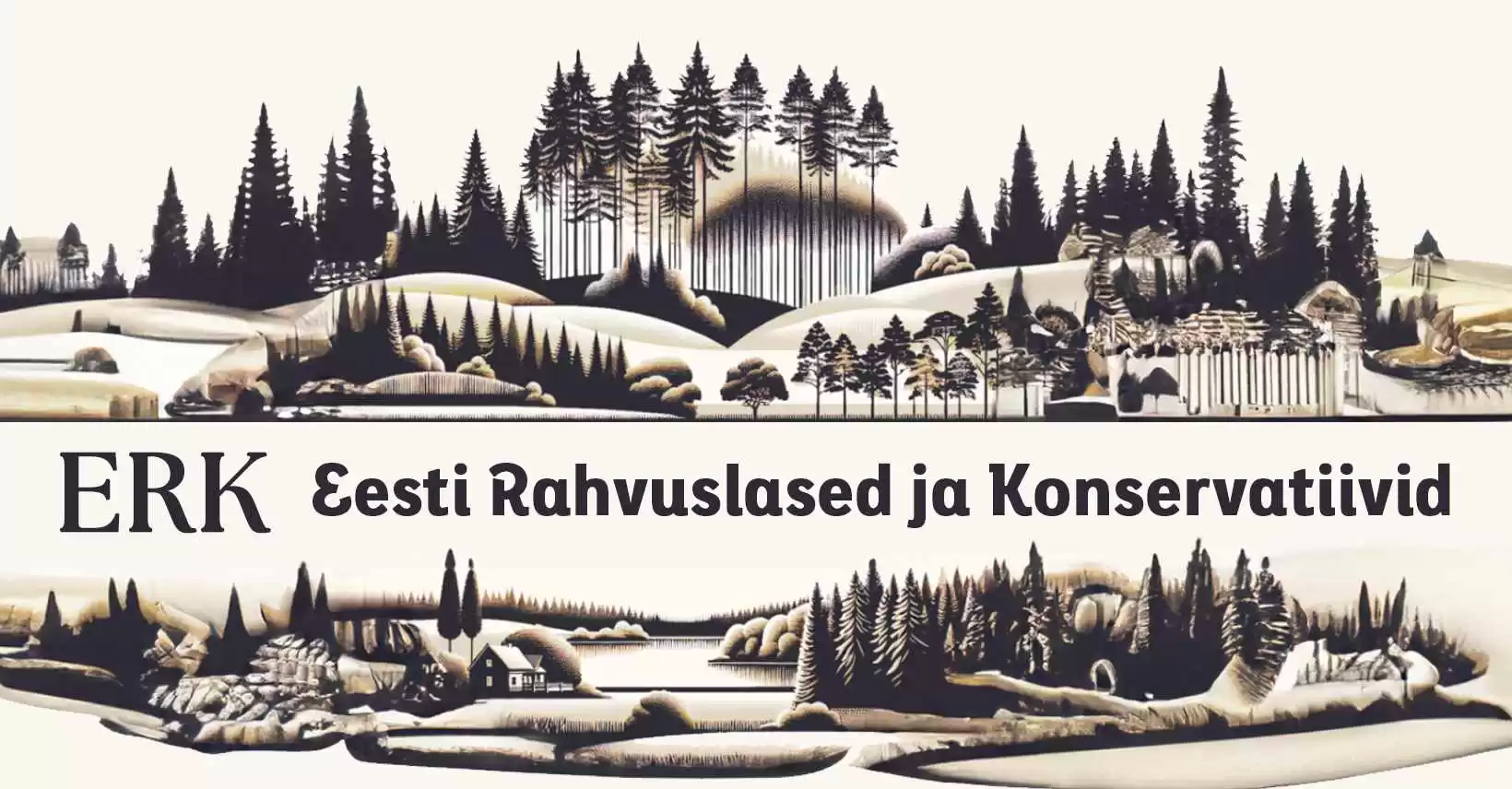Reuters cited four unnamed sources to report that “Putin Wants Ukraine Ceasefire on Current Frontlines”, which coincided with the Russian leader reaffirming his readiness for talks during a press conference with his Belarusian counterpart but adding that they must acknowledge the ground realities. Moreover, he expressed concern about Zelensky remaining in office beyond the expiration of his term since he said that his side doesn’t know who has the legitimacy to negotiate peace in Ukraine’s name.
President Putin’s latest remarks might appear to lend credence to Reuters’ report, but that’s a specious conclusion that’s discredited by his prior insistence that any cessation of hostilities must meet Russia’s national security interests. Recognizing its present territorial gains is only part of the picture since the larger issues involve the European security architecture and the worsening security dilemma with NATO. These are unlikely to be achieved in full, however, hence his interest in pragmatically compromising.
Here are some earlier analyses on this subject for readers to review the evolution of his approach:
* 14 July 2022: “Korybko To Azerbaijani Media: All Sides Of The Ukrainian Conflict Underestimated Each Other”
* 5 October 2022: “Russia Will Still Strategically Win Even In The Scenario Of A Military Stalemate In Ukraine”
* 12 November 2022: “20 Constructive Critiques Of Russia’s Special Operation”
* 29 November 2022: “The Evolution Of Key Players’ Perceptions Across The Course Of The Ukrainian Conflict”
* 18 June 2023: “Putin Chose The Perfect Time To Reveal Details About The Now-Defunct Draft Treaty With Ukraine”
* 20 June 2023: “Putin Strongly Suggested That A Political Solution To The Proxy War Is Still Possible”
* 20 December 2023: “Putin’s Admission Of Naivety About The West Signals His New Stance Towards Peace Talks”
* 26 December 2023: “The New York Times’ Alleged Scoop About Putin’s Peace Push Is Actually Old News”
* 5 February 2024: “Putin’s Remarks About A ‘Demilitarized Zone’ Suggest Flexibility In Any Potential Peace Talks”
* 4 March 2024: “Why’d The Wall Street Journal Suddenly Share The Terms Of Spring 2022’s Draft Peace Treaty?”
* 18 March 2024: “Putin’s Talk Of Setting Up A ‘Sanitary/Security Zone’ In Ukraine Hints At A Potential Compromise”
* 7 May 2024: “Russia Hopes To Influence Ukraine’s Possibly Impending US-Backed Regime Change Process”
* 11 May 2024: “Here’s Why Russia’s Making A Fresh Push Into Ukraine’s Kharkov Region”
They’ll now be summarized for the reader’s convenience before placing them into context.
In brief, Russia envisages the spring 2022 draft treaty being the basis of any resumed peace talks with Ukrainian officials except those that were recently placed on its Interior Ministry’s wanted list, which includes Zelensky and Poroshenko. The reported clauses about Ukrainian-claimed territory would have to be modified to recognize Russia’s control over those regions, which could be done per a Korean-like armistice of the sort proposed by former NATO Supreme Commander Admiral James Stavridis last year.
As for the demilitarization aspect, this might only be partially achieved by turning Ukrainian-controlled territory east of the Dnieper into a buffer zone, while denazification might have to be indefinitely delayed given Russia’s inability to impose this policy onto its opponent at this time. Ukraine might not restore its former constitutional neutrality either since the “security guarantees” that it already clinched with NATO countries won’t be abandoned, though formal NATO membership is unlikely.
The threat of a conventional NATO intervention is why Russia’s maximum goals are unattainable:
* 27 February 2024: “NATO’s Debate Over Whether To Conventionally Intervene In Ukraine Shows Its Desperation”
* 10 March 2024: “Are France & The UK Plotting A Ukrainian Power Play Right Under Germany’s Nose?”
* 13 March 2024: “Poland Might Be Seeking American Approval To Conventionally Intervene In Ukraine”
* 20 March 2024: “France Will Likely Seek To Secure Ukraine’s Black Sea Coast If It Conventionally Intervenes”
* 5 April 2024: “Would NATO Really Hang France Out To Dry If Russia Pulverized Its Forces In Ukraine?”
They could simply enter Ukraine to asymmetrically partition it along the Dnieper if the decision is made.
The greatest concern though is that Russia might interpret any large-scale NATO advance towards the Dnieper as signaling an intent to cross it with a view towards invading that country’s newly unified formerly Ukrainian regions. In that event, with their security dilemma unprecedentedly spiraling out of control without a neutral meditator like India conveying each side’s red lines to the other, Russia might resort to tactical nuclear weapons in self-defense per its doctrine to preemptively neutralize this threat.
Therein lies the reason why Russia’ is carrying out such exercises right now in order to deter NATO from doing so, but the ideologically driven hawks that are responsible for waging the West’s proxy war on Russia through Ukraine don’t seem fazed in the least. The Estonian Prime Minister is lobbying to formalize the presence of NATO’s “trainers” there while the US is now more openly allowing Ukraine to use its arms for striking inside of Russia, both of which are escalations leading to the aforesaid scenario.
Amidst these moves, all eyes are on the upcoming Swiss “peace talks”, which were analyzed below:
* 20 March 2024: “The Substance Of The Swiss Peace Talks Depends On Whether Russia Achieves A Breakthrough”
* 5 May 2024: “Medvedev Has A Point About How Next Month’s Swiss ‘Peace Talks’ Could Backfire On Ukraine”
* 23 May 2024: “Medvedev’s Tweet About The Upcoming Swiss ‘Peace Talks’ Risks Offending Close Russian Partners”
Two new developments, however, might change the abovementioned calculations.
Reuters reported that Zelensky plans to scale back his so-called “peace formula” during that event to only involve vague agreement among the attendees “on food and nuclear security, as well as on humanitarian issues such as prisoner swaps”. At the same time, China and Brazil presented a “joint proposal for peace negotiations with the participation of Russia and Ukraine”, which could theoretically lay the basis for an entirely new peace process upon the inevitable failure of the Swiss one.
Russia won’t participate in Western-hosted talks that only seek to impose demands upon it while the US won’t allow Ukraine to participate in Chinese-hosted ones that could give its systemic rival an unparalleled diplomatic victory in the event of a successful outcome. Logic therefore suggests simply reviving spring 2022’s Turkish-hosted talks, but if that’s not possible for whatever reason, then India would be a suitable replacement due to it masterfully multi–aligning between Russia and the West.
In order to get there, the NATO-Russian security dilemma can’t spiral out of control, which requires that any conventional intervention by that bloc doesn’t cross its opponent’s red line of crossing the Dnieper and thus prompting it to possibly resort to tactical nukes in preemptive self-defense. Assuming that this is manageable, then Russia and the US would have to agree on the terms for freezing this conflict, which could build upon spring 2022’s draft treaty and the earlier mentioned partial demilitarization proposal.
Russia’s victory in the “race of logistics”/“war of attrition” with NATO alongside the US’ restlessness to “Pivot (back) to Asia” to more muscularly contain China as soon as possible could combine to incentivize it to compromise. Likewise, Russia’s impressive economic growth despite the world’s most punitive sanctions regime and the need to accelerate its grand strategic reorientation to the Global South could combine to incentivize it to do the same, albeit only if its national security interests are ensured.
With these factors in mind, the only variables that could offset the convergence of interests between them to compromise on this conflict concern the calculations of the US’ ruling liberal–globalist elite, who are ideologically driven hawks that formulate policy in ways that others rightly consider irrational. They might wager that it’s worth ordering a conventional NATO intervention in Ukraine that crosses the Dnieper in the event of a Russian breakthrough instead of secretly negotiating that country’s partition.
All bets would be off in that scenario, which can’t be ruled out give their irrational track record, but it’s also possible that cooler heads could prevail to either call off that invasion or rely on a neutral party’s mediation like India’s to calmly manage the asymmetrical partition process with Russia ahead of time. The ball is therefore in the US’ court since Russia has signaled that it’s willing to compromise so long as its national security interests as met, but it remains to be seen if the US is ready to meet it halfway.







